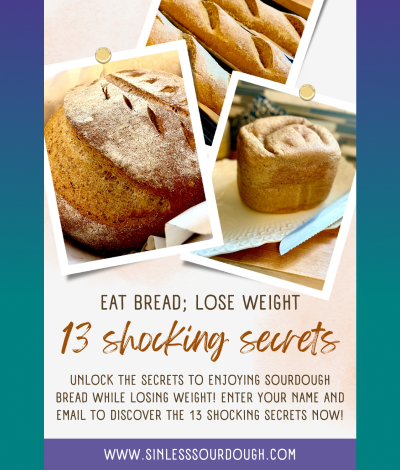Cracking the Code of Pairing Non Alcoholic Wines with Cheese
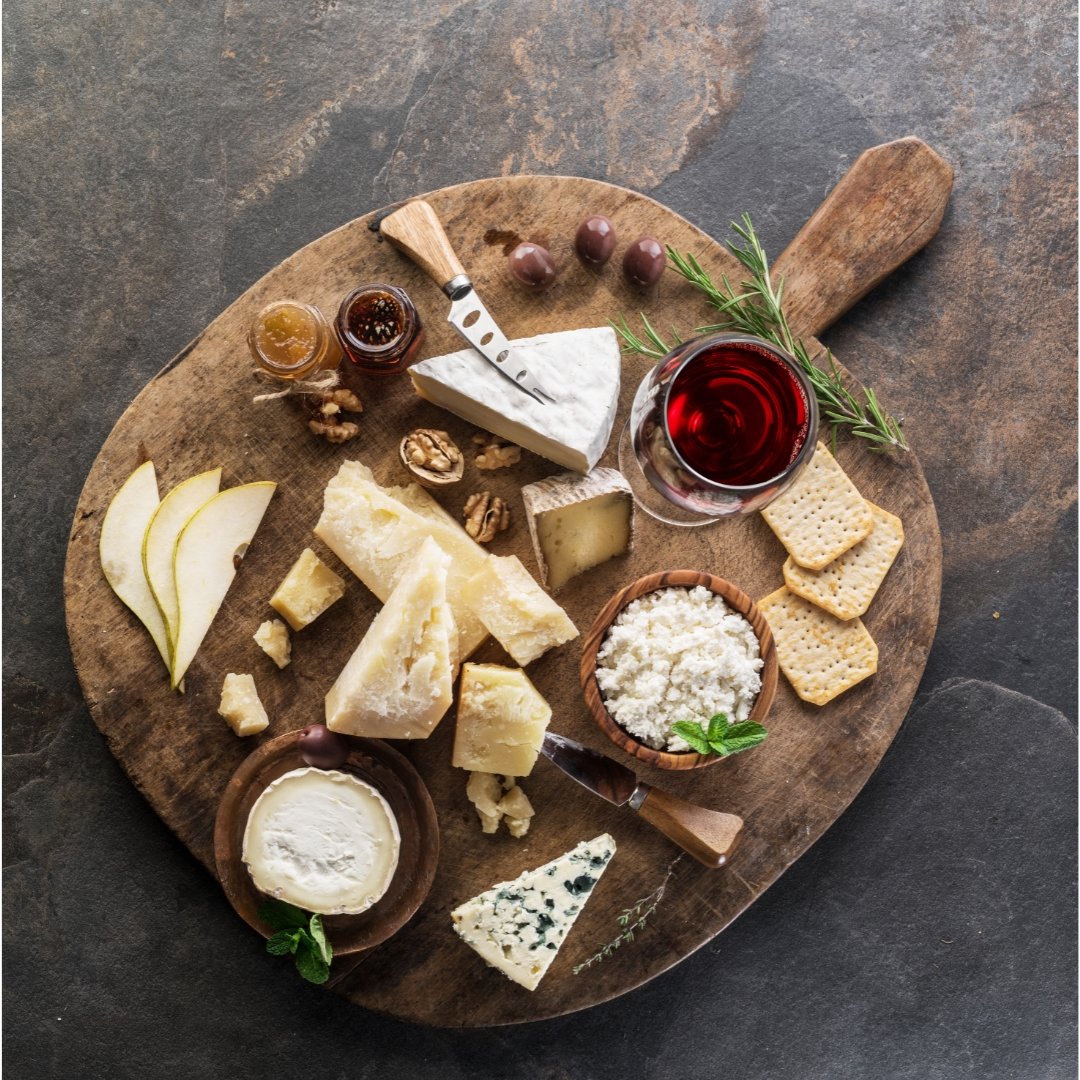
Non-alcoholic wines have opened a new chapter in my lifelong romance with cheese pairing, proving that true culinary love stories can flourish without alcohol. In my previous life, I was immersed in the world of traditional wines and gourmet delights. I hosted a television show that celebrated the art of pairing cheese with wine, penned a cookbook that captured these gastronomic love affairs, and guided eager hands through the intimate process of cheesemaking. My heart belonged to cheese, and I revelled in orchestrating wine and cheese events that were nothing short of epicurean poetry.Now, I’ve embarked on a new journey, one that proves that passion knows no boundaries. I’ve discovered that non-alcoholic wines can court cheese with the same finesse and ardor as their traditional counterparts. This revelation has reignited my enthusiasm for creating magical moments around the cheese board.Pairing cheese with non-alcoholic wine is an adventure that tantalizes the senses just as much as before. It’s a dance of flavors, a symphony of textures, where each careful match tells a story of harmony and contrast. The excitement of finding that perfect pairing still sends a thrill through me, proving that the absence of alcohol doesn’t diminish the romance of the experience.In this alcohol-free realm, I’ve found that the possibilities are just as endless, the discoveries just as thrilling. Each pairing is an opportunity to fall in love all over again with the rich tapestry of flavors that both cheese and non-alcoholic wine have to offer. It’s a new chapter in my love affair with gastronomy, one that I’m eager to share with fellow food enthusiasts and curious palates alike.
How Do You Host A Non-Alcoholic Wine And Cheese Tasting Party?
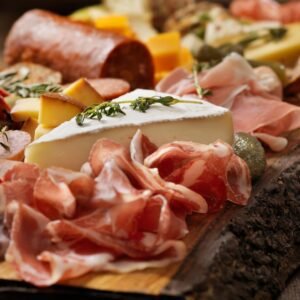
Hosting a non-alcoholic wine and cheese tasting party can be an exciting and inclusive event.
Here are some creative theme ideas to make your event memorable:
- Embark on a culinary journey through Italy with a selection of cured meats, cheeses, and accompaniments. Create a cheese board featuring:
- Cured meats: Prosciutto di Parma, Mortadella, salami, and bresaola
- Cheeses: Parmigiano-Reggiano, Gorgonzola, Pecorino Romano, and Mozzarella di Bufala
- Accompaniments: Black olives, sun-dried tomatoes, marinated artichoke hearts, and low-carb crackers
- Around the World Tour: Create a global experience by featuring non-alcoholic wines and cheeses from different countries. Set up stations representing various regions, complete with decorations and informational cards about each country’s culinary traditions.
- Seasonal Soirée: Base your selections on the current season. For example, a summer party might feature light, refreshing non-alcoholic wines paired with fresh, mild cheeses, while a winter gathering could showcase bolder flavors and aged cheeses.
- Historical Journey: Take guests on a trip through time by featuring cheese-making traditions from different eras, paired with non-alcoholic wines inspired by historical recipes or modern interpretations of classic styles.
- Flavor Profile Adventure: Organize your tasting around specific flavor profiles like “sweet and salty,” “tangy and creamy,” or “bold and spicy.” This can help guests understand how different flavors complement each other.
MORE IDEAS…
- Local Artisan Showcase: Highlight local producers by featuring non-alcoholic wines and cheeses from your region or state. This supports local businesses and gives guests a taste of local craftsmanship.
- Texture Exploration: Focus on the textures of both the cheeses and non-alcoholic wines. Create pairings that contrast smooth with grainy, creamy with bubbly, or dense with light.
- Color-Themed Tasting: Organize your selections based on color. For example, feature white non-alcoholic wines with pale cheeses, rosé with pink-hued cheeses, and red non-alcoholic wines with orange or red-tinted cheeses.
- Vegan Variety: Showcase plant-based cheeses paired with vegan-friendly non-alcoholic wines, demonstrating the diversity and quality of these alternatives.
- Dessert Delight: Focus on sweet non-alcoholic wines paired with dessert cheeses, chocolate, and fruits for an indulgent experience.
- Blind Tasting Challenge: Add an element of fun by having guests taste wines and cheeses blindfolded, encouraging them to focus on flavors and aromas without visual cues.
These themes can make your non-alcoholic wine and cheese tasting party engaging, educational, and enjoyable for all guests, regardless of their drinking preferences
What Are Some Examples of Cheese and Wine Pairings?
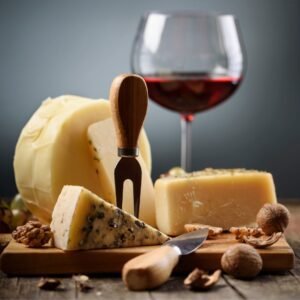
Here are some examples of cheeseboard options with wines:
Option One:
Feta (Fresh): Feta cheese presents a delightful combination of tangy and salty sensations, with a crumbly texture that adds a lightness to its profile. The bright acidity of the NA brut sparkling wine or NA Sauvignon Blanc beautifully complements the cheese’s zesty flavor, enhancing its fresh and slightly nutty notes. Together, they create a refreshing balance that invigorates the palate. Manchego (Semi-Hard): Manchego offers a tangy and salty flavor profile, characterized by its firm yet slightly creamy texture. The NA wine’s bright acidity cuts through the cheese’s richness, accentuating its nutty undertones and enhancing the overall tasting experience. This pairing results in a harmonious blend of flavors that is both satisfying and complex. Taleggio (Washed-Rind): Taleggio is known for its rich and creamy texture, accompanied by a subtle tang and earthy undertones. The NA wine’s bright acidity serves to offset the cheese’s richness, bringing forth its savory and slightly fruity flavors. This combination creates a delightful contrast that highlights the cheese’s depth while refreshing the palate. Brie (Soft-Ripened): Brie features a luxuriously creamy texture with a rich and buttery flavor, often accompanied by a mild tang. The bright acidity of the NA wine cuts through this creaminess, enhancing the cheese’s earthy and slightly sweet notes. This pairing results in a beautifully balanced experience that is both indulgent and refreshing. Gorgonzola (Blue): Gorgonzola boasts a rich and creamy texture with a piquant and slightly tangy flavor profile, marked by its characteristic blue veins. The NA wine’s bright acidity effectively offsets the cheese’s richness and enhances its bold, savory notes. This combination creates a dynamic interplay of flavors that is both complex and satisfying, making for an unforgettable tasting experience.
Option Two:
Mozzarella (Fresh): Fresh mozzarella is celebrated for its creamy texture and mild, milky flavor, which carries a subtle sweetness. The bright acidity of the NA wine complements the cheese’s richness, enhancing its delicate flavors while providing a refreshing contrast. This pairing creates a light and satisfying experience that highlights the freshness of the mozzarella. Fontina (Semi-Soft): Fontina features a semi-soft texture with a buttery and slightly nutty flavor, accompanied by a touch of saltiness. The bright acidity of the NA wine beautifully balances the cheese’s richness, amplifying its savory notes while refreshing the palate. This combination results in a delightful interplay of flavors that is both comforting and elegant. Parmigiano-Reggiano (Hard): Parmigiano-Reggiano is known for its hard texture and complex flavor profile, characterized by a salty and umami-rich taste with nutty undertones. The bright acidity of the NA wine effectively offsets the cheese’s fattiness, enhancing its crystalline texture and bringing out its rich flavors. This pairing creates a sophisticated balance that elevates the tasting experience. Taleggio (Washed-Rind): Taleggio, with its rich and creamy texture, presents a subtle tang and earthy flavor profile. The bright acidity of the NA wine cuts through the cheese’s richness, highlighting its savory and slightly fruity notes. This combination results in a harmonious blend that enhances the depth of the cheese while providing a refreshing contrast. Gorgonzola Dolce (Blue): Gorgonzola Dolce offers a creamy texture with a rich, sweet, and piquant flavor profile, marked by its characteristic blue veins. The bright acidity of the NA wine serves to offset the cheese’s richness and enhances its bold, savory notes. This pairing creates a dynamic and delightful interplay of flavors that is both indulgent and refreshing, making for an exceptional tasting experience.
Option Three:
Cream Cheese (Fresh): Fresh cream cheese is characterized by its smooth and creamy texture, with a mild, buttery flavor. The NA Chardonnay enhances this creaminess with its own buttery texture, creating a rich mouthfeel. Similarly, the smoothness of NA Merlot complements the cream cheese, resulting in a luxurious and velvety pairing that highlights the cheese’s subtle flavors. Colby Jack (Semi-Soft): Colby Jack features a semi-soft texture with a nutty and slightly sweet flavor profile. The NA wine’s toasty character complements the cheese’s nuttiness, while the fruity notes of NA Merlot provide a refreshing contrast, enhancing the overall tasting experience. This combination creates a delightful balance between the cheese’s richness and the wine’s vibrant flavors. Aged Cheddar (Hard): Aged cheddar is known for its hard texture and sharp, salty flavor, often accompanied by a slightly nutty undertone. The acidity of the NA wine complements the cheese’s saltiness and sharpness, enhancing its robust flavors. Meanwhile, the medium weight and hint of tannin in NA Merlot balance the cheese’s fattiness, creating a well-rounded pairing that is both satisfying and complex. Humboldt Fog (Soft-Ripened): Humboldt Fog presents a buttery texture with an earthy flavor profile, often accompanied by a subtle tang. The NA Chardonnay’s toasty flavor and buttery texture complement the cheese’s richness, while NA Merlot’s weight stands up to its fattiness. This pairing results in a harmonious blend of flavors that enhances the cheese’s creamy and earthy characteristics. Maytag Blue (Blue): Maytag Blue is characterized by its rich, creamy texture and piquant, salty flavor, marked by its distinctive blue veins. The balanced acidity of NA Chardonnay complements the cheese’s saltiness while offsetting its richness, enhancing its bold flavors. NA Merlot, with its light tannin and astringency, further complements the saltiness, creating a dynamic and enjoyable tasting experience.
Option Four:
Paneer (Fresh, Indian): This mild, creamy cheese with subtle sweetness pairs beautifully with Sparkling Rosé. The wine’s effervescence and acidity complement paneer’s creaminess, refreshing the palate. Pinot Noir’s light, fruity notes enhance the cheese’s delicate flavors, creating a harmonious pairing. Gouda (Semi-Hard, Dutch): With its nutty and buttery profile, Gouda pairs well with both wines. Sparkling Rosé’s toasty character complements the cheese’s nuttiness, while Pinot Noir’s fruity notes provide a delightful contrast, enhancing Gouda’s rich, caramelized flavors. Gruyère (Hard, Swiss): Known for its complex, salty-sweet flavor, Gruyère benefits from Sparkling Rosé’s bright acidity, which cuts through its richness. Pinot Noir’s light body and fruitiness complement the cheese’s depth, creating a sophisticated pairing. Limburger (Washed-Rind, German): This creamy, strong-flavored cheese is balanced by Sparkling Rosé’s acidity and effervescence, which cleanse the palate. Pinot Noir’s light, fruity character contrasts with Limburger’s boldness, providing a refreshing counterpoint. Stilton (Blue, English): This creamy, piquant blue cheese is complemented by Sparkling Rosé’s balanced acidity, which offsets its saltiness. Pinot Noir’s light tannins and fruity notes enhance Stilton’s bold flavors, resulting in a dynamic pairing.These combinations showcase how Sparkling Rosé and Pinot Noir can enhance each cheese’s unique characteristics, creating delightful culinary experiences.
Option Five:
Fresh Goat Cheese (Chevre): Fresh goat cheese, or chevre, is known for its tangy flavor and creamy texture. The oaky notes of Chardonnay enhance the cheese’s tanginess while complementing its creaminess. This pairing creates a refreshing contrast that invigorates the palate. Cabernet Sauvignon, with its bold profile, adds depth, harmonizing with the cheese’s earthiness and providing a delightful introduction to the tasting experience. Brie (Soft-Ripened): Brie features a soft, creamy texture with a rich, buttery flavor and subtle earthiness. The oaky characteristics of Chardonnay beautifully offset the cheese’s richness, while its acidity cleanses the palate. Cabernet Sauvignon’s fuller body and tannins enhance the creaminess and richness of the brie, creating a balanced and indulgent pairing. Gruyère (Hard): Gruyère is a hard cheese characterized by its nutty and slightly sweet flavor, with a firm yet creamy texture. The oaky notes of Chardonnay complement the cheese’s nuttiness, while its acidity cuts through the richness. Cabernet Sauvignon’s robust profile enhances the cheese’s savory notes, resulting in a sophisticated pairing that showcases the complexity of Gruyère. Aged Cheddar (Hard): Aged cheddar is known for its sharp, salty flavor and crystalline texture. The oaky Chardonnay complements the cheese’s richness and sharpness, while its acidity balances its saltiness. Cabernet Sauvignon, with its bold tannins, enhances the cheese’s intensity, creating a rich and satisfying pairing that highlights the cheddar’s robust character. Roquefort (Blue): Roquefort is a blue cheese with a rich, creamy texture and a piquant, salty flavor profile, marked by its characteristic blue veins. The oaky notes of Chardonnay complement the cheese’s richness while the wine’s acidity balances its saltiness. Cabernet Sauvignon, with its bold flavors and tannins, harmonizes with the cheese’s earthiness, creating a dynamic and indulgent pairing that showcases the bold characteristics of Roquefort.
What Can You Also Add To Your Cheese Boards?
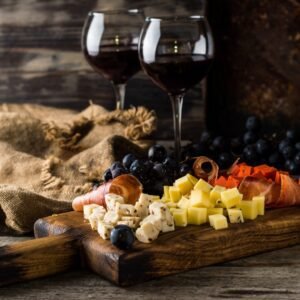 For a Keto Low-Carb non-alcoholic wine and cheese pairing, consider charcuterie options to complement the flavors of the cheese.
For a Keto Low-Carb non-alcoholic wine and cheese pairing, consider charcuterie options to complement the flavors of the cheese.
Here are some examples:
Cured Meats:
Prosciutto: Thinly sliced and savory, pairs well with soft cheeses. Salami: Offers a robust flavor that complements aged cheeses. Bresaola: Air-dried and lean, excellent with fresh cheeses. Pepperoni: Adds a spicy kick, great with mozzarella.
Cheese Selections:
Aged Gouda: Rich and nutty, works well with sweet accompaniments. Blue Cheese: Bold and tangy, pairs nicely with cured meats. Cheddar: Sharp and versatile, complements various meats. Brie or Camembert: Creamy and soft, ideal with fruits or nuts.
Accompaniments:
Marinated Olives: Adds a briny flavor that enhances the cheese. Pickled Vegetables: Such as pickles or pickled cucumbers for crunch. Nuts: Raw or roasted almonds, walnuts, or pecans for texture. Parmesan Chips: A crunchy alternative to crackers.
Dips and Spreads:
Pesto: Great with mozzarella and prosciutto. Whole Grain Mustard: Adds a tangy flavor, pairs well with meats.
Other Items:
Berries: Such as strawberries, blackberries, or raspberries for a touch of sweetness without too many carbs. Avocado: Sliced or mashed, it adds creaminess and healthy fats.
How Much Cheese and Wine Will You Need For Your Event?
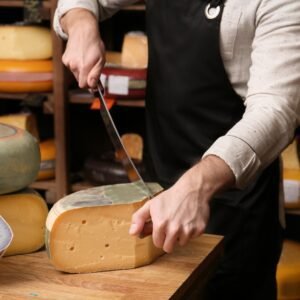 Organizing a non-alcoholic wine and cheese event can become costly, especially if you aim to provide high-quality products. To keep expenses in check, it’s essential to avoid over-purchasing. I highly recommend visiting a specialized cheese shop instead of relying on your local grocery store. This way, you can sample various cheeses beforehand and select unique options that your guests may not have experienced before, adding an extra touch of excitement to your gathering.To ensure you stay within your budget, carefully calculate the number of guests and the appropriate portions of cheese and wine needed. This preparation will help you avoid excess purchases, as cheese is typically non-returnable. For a delightful cheese board, consider featuring five distinct cheeses paired with two varieties of non-alcoholic wines.
Organizing a non-alcoholic wine and cheese event can become costly, especially if you aim to provide high-quality products. To keep expenses in check, it’s essential to avoid over-purchasing. I highly recommend visiting a specialized cheese shop instead of relying on your local grocery store. This way, you can sample various cheeses beforehand and select unique options that your guests may not have experienced before, adding an extra touch of excitement to your gathering.To ensure you stay within your budget, carefully calculate the number of guests and the appropriate portions of cheese and wine needed. This preparation will help you avoid excess purchases, as cheese is typically non-returnable. For a delightful cheese board, consider featuring five distinct cheeses paired with two varieties of non-alcoholic wines.
Tips for a Successful Event:
- Select a Theme: Consider choosing a theme for your cheese and wine pairings, such as regional specialties or seasonal flavors, to create a cohesive experience.
- Presentation Matters: Invest in attractive serving platters and utensils to enhance the visual appeal of your cheese board.
- Include Accompaniments: Complement the cheeses with a variety of accompaniments, such as fresh fruits, nuts, olives, and artisanal bread, to elevate the tasting experience.
- Engage Your Guests: Encourage your guests to share their thoughts on the different cheeses and wines, fostering conversation and making the event more interactive.
The following amounts are recommended for different group sizes:
Cheese and Wine Amounts:
- Cheese: Plan on approximately 0.5 ounces of cheese per person. This means for a cheese-centric event, you would need about 3 pounds of cheese for 16 people or 9 pounds for 24 people. Here’s the breakdown:
- 4 people: 1 pound (16 ounces)
- 6 people: 1.5 pounds (24 ounces)
- 8 people: 2 pounds (32 ounces)
- 12 people: 2.5 pounds (40 ounces)
- 16 people: 3 pounds (48 ounces)
- 24 people: 4.5 pounds (72 ounces)
- Wine: For a wine and cheese event, it is generally suggested to have one bottle of wine for every two people. Each bottle contains about 5 glasses of wine. The recommended amounts are:
- 4 people: 2 bottles (1 of each wine)
- 6 people: 3 bottles (1 of each wine)
- 8 people: 4 bottles (2 of each wine)
- 12 people: 6 bottles (3 of each wine)
- 16 people: 8 bottles (4 of each wine)
- 24 people: 12 bottles (6 of each wine)
Section 1: Guests Eating Dinner:
When guests are having dinner, the cheese and wine can be served as a lighter accompaniment. Here are the recommended amounts: Cheese and Wine Amounts:
- Cheese: Approximately 0.25 ounces of cheese per person.
- Wine: One bottle of wine for every three people.
Breakdown for Dinner Scenario:
- 4 people:
- Cheese: 1 ounce (4 ounces total)
- Wine: 1 bottle (0.5 of each wine)
- 6 people:
- Cheese: 1.5 ounces (6 ounces total)
- Wine: 2 bottles (1 of each wine)
- 8 people:
- Cheese: 2 ounces (8 ounces total)
- Wine: 3 bottles (1.5 of each wine)
- 12 people:
- Cheese: 3 ounces (12 ounces total)
- Wine: 4 bottles (2 of each wine)
- 16 people:
- Cheese: 4 ounces (16 ounces total)
- Wine: 5 bottles (2.5 of each wine)
- 24 people:
- Cheese: 6 ounces (24 ounces total)
- Wine: 8 bottles (4 of each wine)
Cheese Varieties and Wine Selections:
- Varieties of Cheese: 5 different cheeses
- Wine Selections: 2 different wines
Section 2: Guests Not Eating Dinner
When guests are not having dinner and are enjoying cheese and wine throughout the night, the amounts increase to accommodate more substantial snacking.
Cheese and Wine Amounts:
- Cheese: Approximately 0.5 ounces of cheese per person.
- Wine: One bottle of wine for every two people.
Breakdown for Snack Scenario:
- 4 people:
- Cheese: 2 ounces (8 ounces total)
- Wine: 2 bottles (1 of each wine)
- 6 people:
- Cheese: 3 ounces (12 ounces total)
- Wine: 3 bottles (1.5 of each wine)
- 8 people:
- Cheese: 4 ounces (16 ounces total)
- Wine: 4 bottles (2 of each wine)
- 12 people:
- Cheese: 6 ounces (24 ounces total)
- Wine: 6 bottles (3 of each wine)
- 16 people:
- Cheese: 8 ounces (32 ounces total)
- Wine: 8 bottles (4 of each wine)
- 24 people:
- Cheese: 12 ounces (48 ounces total)
- Wine: 12 bottles (6 of each wine)
Cheese Varieties and Wine Selections:
- Varieties of Cheese: 5 different cheeses
- Wine Selections: 2 different wines
This structure ensures that your guests have an enjoyable experience, whether they are dining or simply snacking on cheese and wine throughout the event!
What Low In Sugar Non-Alcoholic Sparkling Wines Pair Best With Cheeses?
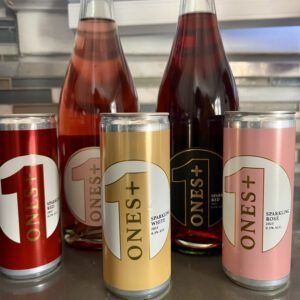
This wines are listed from the lowest grams of sugar per 100 mL to the highest in each category.
Sparkling Wines:
- ONES Sparkling White: 9.6 calories and 0g sugar per 100mL (Click this link for a 10% discount on ALL Ones Sparkling Wines)
- ONES Sparkling Rosé: 7.2 calories and 0g sugar per 100mL (Click this link for a 10% discount on ALL Ones Sparkling Wines)
- ONES Sparkling Red: 7.2 calories and 0g sugar per 100mL (Click this link for a 10% discount on ALL Ones Sparkling Wines)
- Sovi Sparkling Wine: 10 calories and 1.3g sugar per 100mL
- Joyus Sparkling White: 12.5 calories and 2.5g sugar per 100mL
- Joyus Sparkling Rose: 12.5 calories and 2.5g sugar per 100mL
- Noughty Sparkling Chardonnay: 14 calories and 2.9g sugar per 100mL
- Thomson & Scott Noughty Sparkling Chardonnay: 14.4 calories and 3.2g sugar per 100mL
- Château del ISH (Sparkling Rosé): 20 calories and 3.9g sugar per 100mL
- Edanvale Sparkling Cuvee Spanish: 24 calories and 3.8g sugar per 100mL
- Edenvale Sparkling Rose: 36 calories and 3.8g sugar per 100mL
- Oddbird Non-Alcoholic Sparkling Rosé: 19.4 calories and 4.4g sugar per 100mL
- Edenvale Non Alcoholic Rose: 21 calories and 4.6g sugar per 100mL
- Edenvale Sparkling Shiraz: 21 calories and 4.7g sugar per 100mL
- Edanvale Sparkling Cuvee: 23 calories and 5.1g sugar per 100mL
What Low Sugar Non-Alcoholic White Wines Pair Best With Cheeses?

Whites (from lowest to highest sugar per 100 mL):
- The Expedition Series Non-Alc Verdejo Sauvignon Blanc: 24 calories and 0g sugar per 100mL
- Sovi Chenin Blanc: 10 calories and 1.3g sugar per 100mL
- Edenvale Semillon Sauvignon Blanc: 8 calories and 1.6g sugar per 100mL
- Giesen Sauvignon Blanc: 12.5 calories and 1.75g sugar per 100mL
- Brochet Zero Organic Sauvignon Blanc: 8 calories and 1.8g sugar per 100mL
- Noughty Blanc De-alcoholised White Wine: 17 calories and 2.0g sugar per 100mL
- Princess Alternativa Bianco Dry Non-Alcoholic White Wine: 17 calories and 2.6g sugar per 100mL
- Edanvale Pinot Gris: 13 calories and 2.8g sugar per 100mL
- Lautus Chardonnay: 20 calories and 2.8g sugar per 100mL
- Edenvale The Spanish Expedition Series Verdejo Sauvignon Blanc: 17 calories and 3.6g sugar per 100mL
- Edenvale Non-Alc Chardonnay: 18 calories and 3.9g sugar per 100mL
- Leitz Eins Zwei Non-Alc Riesling: 24 calories and 4.9g sugar per 100mL
- Edenvale Blanc de Blanc Premium Reserve: 23 calories and 5.2g sugar per 100mL
- Luminara Napa Valley Chardonnay Dealcoholized: 18 calories and 5.2g sugar per 100mL
- Le Petit Beret Virgin Sauvignon Blanc: 25 calories and 6.2g sugar per 100mL
When pairing non-alcoholic wines with strong cheeses, it’s important to consider the intensity of both the wine and the cheese. Acidic wines can help cut through the richness of creamy cheeses, while the natural acidity in many non-alcoholic whites can balance the saltiness of stronger cheeses.
What Low In Sugar Non-Alcoholic Rose Wines Pair Best With Soft Cheeses?
Rosés (from lowest to highest sugar per 100 mL):
- Sovi Sparkling Rose: 10 calories and 1.3g sugar per 100mL
- Joyus Rose: 10 calories and 2g sugar per 100mL
- Noughty Non-Alcoholic Sparkling Rosé: 18 calories and 4g sugar per 100mL
- Wölffer Spring in a Bottle Non-Alcoholic Rosé: 24.5 calories and 4.8g sugar per 100mL
- Edenvale Rose: 22 calories and 5.5g sugar per 100mL
What Low In Sugar Non-Alcoholic Red Wines Pair Best With Soft Cheeses?
Reds (from lowest to highest sugar per 100 mL):
- YOURS Non-Alcoholic California Red Blend: 6.8 calories and 0.68g sugar per 100mL
- Sovi Reserve Red: 10 calories and 1.3g sugar per 100mL
- Joyus Cabernet Sauvignon: 16.7 calories and 1.3g sugar per 100mL
- Alcohol Removed Cabernet Sauvignon: 13.3 calories and 1.3g sugar per 100mL
- Edenvale Non-Alcoholic Grenach Shiraz Mataro: 10 calories and 1.8g sugar per 100mL
- Naughty Red: 14 calories and 2.5g sugar per 100mL
- Lautus Non-Alcoholic Red: 12 calories and 3g sugar per 100mL
- Edenvale Non-Alcoholic Tempranillo Cabernet Sauvignon: 14 calories and 3g sugar per 100mL
- Luminara Red Blend: 20 calories and 3.2g sugar per 100mL
- Edenvale Shiraz: 17 calories and 3.8g sugar per 100mL
- Edenvale Cabernet Sauvignon: 18 calories and 3.9g sugar per 100mL
- Edenvale Premium Reserve Pinot Noir: 20 calories and 4.3g sugar per 100mL
- Leitz Eins-Zwei-Zero Pinot Noir: 21 calories and 4.9g sugar per 100mL
*Note: These lists are not based on my personal preferences.
What Are Other Non-Alcoholic Options To Serve Besides Just NA Wine?
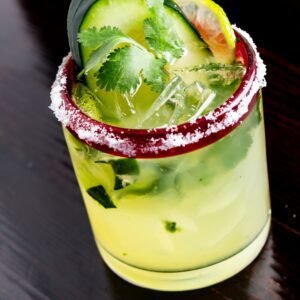 When hosting a non-alcoholic wine and cheese event, you’ll want to have other beverage options available to your guests. Some of these options include sparkling wine, flat water, tea, and coffee. These mocktails not only keep your carb intake low but also enhance the flavors of the cheeses you choose to serve. Enjoy experimenting with different pairings!
When hosting a non-alcoholic wine and cheese event, you’ll want to have other beverage options available to your guests. Some of these options include sparkling wine, flat water, tea, and coffee. These mocktails not only keep your carb intake low but also enhance the flavors of the cheeses you choose to serve. Enjoy experimenting with different pairings!
Here are some others:
Hibiscus Mint Keto Mocktail:
This refreshing drink combines hibiscus tea and mint, making it a vibrant choice. It pairs nicely with creamy cheeses like brie or goat cheese.
Ingredients:
- Hibiscus tea
- Fresh mint leaves
- Sugar-free sweetener (like stevia)
- Sparkling water
Instructions:
- Brew hibiscus tea, cool it, mix with mint and sweetener, then top with sparkling water. Serve over ice.
Cranberry Ginger Sparkling Mocktail:
A delightful mix of cranberry and ginger flavors, this mocktail complements sharp cheeses like aged cheddar.
Ingredients:
- Sugar-free cranberry juice
- Ginger ale (diet)
- Fresh lime juice
Instructions:
- Mix cranberry juice and ginger ale, add a splash of lime juice, and serve chilled.
Non-Alcoholic Gin Rickey:
A classic that’s naturally low in carbs, this drink pairs well with a variety of cheeses, especially those with herbal notes.
Ingredients:
- Non-alcoholic gin
- Fresh lime juice
- Soda water
Instructions:
- Combine non-alcoholic gin and lime juice in a glass with ice, top with soda water, and garnish with a lime wedge.
Seedlip Garden & Soda:
This botanical mocktail is light and refreshing, making it a great match for soft cheeses like mozzarella.
Ingredients:
- Seedlip Garden (non-alcoholic spirit)
- Soda water
Instructions:
- Pour Seedlip over ice, top with soda water, and garnish with cucumber slices.
Keto Lemonade:
A simple yet effective mocktail that pairs well with a variety of cheeses, especially creamy ones.
Ingredients:
- Fresh lemon juice
- Water
- Sugar-free sweetener
Instructions:
- Mix lemon juice with water and sweetener to taste. Serve over ice.
What Are Some Tips About Creating Cheeseboards to Pair with Non-Alcoholic Wines?

When serving these cheese boards with non-alcoholic wines, consider the following tips:
Serve the non-alcoholic wine at the appropriate temperature, just as you would with regular wine:
- NA sparkling wines, whites, and roses should be chilled for at least an hour in the refrigerator before serving
- NA light, fruity reds like Pinot Noir should be chilled for a half hour in the refrigerator before serving
- NA reds can be chilled for 15 minutes in the refrigerator before serving. Traditionally reds are served at room temperature. But room temperature is a term used from a long time ago when houses were normally cool, before electric heat. So putting your reds in the fridge for 15 minutes helps to bring them up to make them just slightly cool, but not enough to mute the nose of the non-alcoholic wine.
Use proper wine glasses to enhance the experience:
- Wine glasses need not be expensive, just the right shape to get the most out of your wine experience. Make sure the rim is smaller than the bowl. This allows for the aromas to be concentrated for when you are nosing the wine. The narrow rim also allows for the wine to fall over your entire palate. This allows you to experience the front, mid, and back taste of the NA wine, thus heightening your experience
Optimizing Non-Alcoholic Wine for Your Cheese Board:
Non-alcoholic wines can benefit from a brief decanting period, potentially enhancing their flavor profile. While extended aging isn’t necessary, a short time in a decanter may allow the flavors to develop and harmonize. To determine the ideal serving approach for your event, consider this experiment in advance of your event:
- Purchase the non-alcoholic red wine you plan to serve.
- Open the bottle and taste it immediately.
- Decant the NA wine.
- Sample the NA wine every 30 minutes, noting any changes in flavor or aroma.
This process will help you gauge whether decanting improves the wine and, if so, how long before your event you should decant it. By conducting this taste test in advance, you’ll ensure your non-alcoholic wine is at its best when paired with your carefully curated cheese board, elevating the overall experience for your guests.
How Do You Arrange The Cheeses On The Platters?
 Arranging cheeses from mildest to strongest flavor is a common practice when setting up a cheese board. This approach helps guests appreciate the nuances of each cheese without overwhelming their palates.
Arranging cheeses from mildest to strongest flavor is a common practice when setting up a cheese board. This approach helps guests appreciate the nuances of each cheese without overwhelming their palates.
Why arrange the cheeses from mildest to strongest?
- Palate progression: Starting with milder flavors allows the taste buds to warm up gradually.
- Flavor appreciation: Subtle flavors of milder cheeses aren’t overshadowed by stronger ones.
- Taste experience: It creates a journey of flavors, building in intensity and complexity.
- Prevents palate fatigue: Stronger cheeses can overwhelm the palate if eaten first.
Here are some examples:
Example 1:
- Fresh Mozzarella (mild, milky)
- Gouda (mild to medium, slightly sweet)
- Manchego (medium, nutty)
- Aged Cheddar (sharp, tangy)
- Blue Stilton (strong, pungent)
Nuts:
- Almonds (pairs well with Mozzarella and Gouda)
- Walnuts (complements Manchego and Aged Cheddar)
- Pecans (enhances Blue Stilton)
Low-carb crackers:
- Flaxseed crackers (neutral base for all cheeses)
- Parmesan crisps (pairs nicely with Mozzarella and Gouda)
- Almond flour herb crackers (complements Manchego and Aged Cheddar)
Example 2:
- Ricotta drizzled in olive oil (very mild, creamy)
- Brie (mild, buttery)
- Gruyère (medium, nutty)
- Taleggio (medium-strong, pungent)
- Roquefort (very strong, sharp blue)
Nuts:
- Pistachios (pairs well with Ricotta and Brie)
- Hazelnuts (complements Gruyère)
- Macadamia nuts (enhances Taleggio and Roquefort)
Low-carb crackers:
- Cauliflower thins (great with Ricotta and Brie)
- Seed crackers (multi-seed mix, pairs well with all cheeses)
- Cheese whisps (enhances Gruyère and Taleggio)
Example 3:
- Cream Cheese (mild, smooth)
- Havarti (mild, buttery)
- Fontina (medium, earthy)
- Aged Gouda (medium-strong, caramel notes)
- Epoisses (very strong, pungent)
Nuts:
- Cashews (pairs well with Cream Cheese and Havarti)
- Brazil nuts (complements Fontina)
- Marcona almonds (enhances Aged Gouda and Epoisses)
Low-carb crackers:
- Coconut flour crackers (neutral base for milder cheeses)
- Chia seed crackers (pairs well with Fontina and Aged Gouda)
- Keto cheese straws (complements all cheeses, especially Epoisses)
When arranging your cheese board, you can place the mildest cheese at one end and the strongest at the other, creating a natural progression for tasting. You might also consider providing small signs or labels indicating the suggested tasting order to guide your guests through the experience.Remember, personal preferences can vary, and some guests might prefer to taste cheeses in a different order. The arrangement is a suggestion to enhance the overall tasting experience, but ultimately, guests should feel free to explore the cheeses as they wish.
Additional accompaniments to consider:
- Fresh herbs like rosemary or thyme sprigs for aroma and garnish
- A small bowl of extra virgin olive oil for drizzling
- Low-carb vegetable crudités like cucumber slices or bell pepper strips
- A few berries (in moderation) like raspberries or blackberries for a touch of sweetness
- Olives or cornichons for a tangy contrast (check carb content)
Remember to provide small serving utensils for each accompaniment and cheese to maintain hygiene and ease of serving. These combinations of nuts and low-carb crackers will add texture, flavor, and visual appeal to your cheese trays while keeping the carb content in check.
Should You Provide Information About the Cheeses and Non-Alcoholic Wine Pairings?
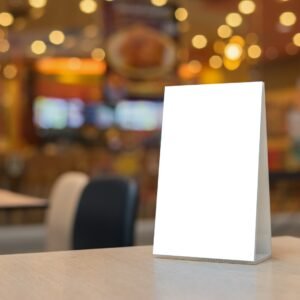 Providing information about each cheese and its non-alcoholic wine pairing is an excellent way to educate and engage your guests. This practice enhances the tasting experience and adds depth to the social interaction.
Providing information about each cheese and its non-alcoholic wine pairing is an excellent way to educate and engage your guests. This practice enhances the tasting experience and adds depth to the social interaction.
Here’s how you can approach this:
- Create tasting notes: For each cheese and wine pairing, prepare a brief description that includes:
- The cheese’s name and origin
- Its flavor profile and texture
- The non-alcoholic wine’s name and style
- Why the pairing works
- Use descriptive language: Employ vivid, sensory words to describe flavors, aromas, and textures. This helps guests connect with the experience.
- Share interesting facts: Include tidbits about the cheese-making process, the wine’s production method, or historical anecdotes.
- Explain the pairing rationale: Discuss why certain flavors complement each other or how textures interact.
- Encourage exploration: Suggest that guests try different combinations and share their observations.
Here’s an example of how you might present the pairing information:
Cheese: Aged Cheddar
Origin: England Flavor profile: Sharp, tangy, with a crumbly texture and nutty undertones Paired with: Two Hoots Non-Alc Cabernet Sauvignon Why it works: The bold, sharp flavors of aged cheddar stand up well to the rich tannins in this non-alcoholic Cabernet Sauvignon. The wine’s notes of sun-ripened cherries provide a fruity contrast to the cheese’s savory character, while its structure balances the cheddar’s fattiness. Interesting fact: Cheddar has been produced since at least the 12th century and gets its name from the Cheddar Gorge caves in Somerset, where it was traditionally stored to age. By providing this type of information, you’re not only offering a tasting experience but also an educational one. This approach can spark conversations, encourage guests to pay closer attention to flavors and textures, and create a more memorable and engaging event.
What Keto Low-Carb Dishes Can You Serve Guests After The NA Wine and Cheese Course?
If serving dinner then keep your NA wine and cheese course relatively light with a few fresh cheeses and a bottle of zero alcohol sparkling wine. This way you can choose a Keto or low-carb entree with more weight and flavor.
Here are a few options:
- Tuna Avocado Blackberry Salad (Hearty Healthy)
- Bacon-Wrapped Salmon Asparagus (Heart Healthy)
- Chicken Marsala (Heart Healthy)
- Stuffed Pork Chops (Heart Healthy)
- Montreal Strip Loin (Healthy Heart)
What Are Other Non Alcoholic Wine Articles You Will Enjoy?
- Non-Alcoholic Wine To Elevate Your Thanksgiving Feast
- Best Non Alcoholic Wine Options For Low Carb Thanksgiving
- Non Alcoholic Sparkling Wine and Low Carb Sourdough Delights
- Non Alcoholic Wine Explained For Low Carb Sippers
- 10 Unique & Healthy Mocktails You Need To Try
- Cracking The Code Of Pairing Non Alcoholic Wines With Cheese
- Secrets To Pairing Alcohol-Free White Wines with Seafood Delights
- How To Choose The Best Zero Alcohol Red Wine
- ONES Sparkling Rose & Lemon-Ginger Cod
- 16 Jaw-Dropping Non Alcoholic Wine Health Benefits
- Non Alcoholic Wine Explained For Low-Carb Sippers
- How To Master Non-Alcoholic Wine Etiquette At Social Events
- How To Choose The Best Zero Alcohol Red Wine
- Cracking The Code Of Pairing Non Alcoholic Wines With Cheese
I’m excited to share with you my good news… Introducing Sinless Sourdough – Where Ancient Art Meets Low Carb Science!

Stop sacrificing flavor for your health goals – our authentic heritage sourdough starters have been specially adapted for low-carb baking
Limited Time Offer: 82% OFF – Only $19.99 Today (Regular Price: $113)
Sinless Sourdough™ Starter + Membership Includes:
- Authentic Heritage Starter shipped directly to your door
- Complete Video Training Library showing you step-by-step how to create:
- Artisan boules and batards with delicious crispy crust and soft interior
- Crisp French baguettes for the dinner table or as crostini
- Chewy Montreal-style bagels that won’t spike your blood sugar
- German street pretzels with authentic alkaline crust
- Convenient everyday bread machine loaves for sandwiches
- Supportive Community of fellow low-carb bakers to share your journey
- Extensive Recipe Collection for using sourdough discard (nothing goes to waste!)
“After years of disappointing low-carb bread experiments, Sinless Sourdough changed everything. I’m enjoying real sourdough again without the carb guilt!” — Maria T.
“My family can’t tell the difference between these loaves and traditional bread. The starter is incredibly active and the results are amazing!” — James K.
🔥 CLAIM YOUR MEMBERSHIP NOW 🔥
Use code: Sinless82 at checkout Offer expires soon! Limited starter batches available
82% OFF TODAY FOR MEMBERSHIP
Sinless Sourdough™ Heritage Collection

Transform your low-carb baking with our Global Heritage Collection featuring unique starters from historic moments across continents. Each brings its own personality and flavor profile while maintaining excellent nutritional values—just 1g net carbs compared to 8-10g in traditional starters.
Choose from:
- 1849 San Francisco Gold Rush – Authentic California sourdough character
- 1898 Yukon Gold Rush – Subtle tanginess with notes of butter
- 1847 Oregon Trail – Rustic character with exceptional rise
- 1000-Year-Old Italian Monastery – Delicate complexity with ancient lineage
Each starter connects you to centuries of baking tradition while supporting your modern low-carb lifestyle. Our proprietary transformation process preserves their unique characteristics while adapting them for health-conscious baking.
When you purchase any Sinless Sourdough™ starter, you receive our comprehensive onboarding sequence teaching you exactly how to revive your dehydrated starter for perfect low-carb, high-protein results every time.
Click the link:
SINLESS STARTER SHOP
🍞 START YOUR LOW-CARB SOURDOUGH JOURNEY TODAY! 🍞
Medical Studies and Reviews on Sourdough
Here they are:
Does Sourdough Bread Provide Clinically Relevant Health Benefits?
The Sourdough Microbiome
Study Of Sourdough Starter Microbiome To Boost Bread Quality and Safety
Sourdough Microbiome Comparison and Benefits
Effect of Breadmaking Process on In Vitro Gut Microbiota Parameters in Irritable Bowel Syndrome
Nutritional Benefits of Sourdough; Systematic Review
Sourdough-leavened bread improves postprandial glucose and insulin plasma levels in subjects with impaired glucose tolerance
Use of sourdough in low FODMAP baking
A novel formulation of sourdough bread enriched with plant sterols and high-fibre inulin improves metabolic control in type 2 diabetes
Impact of sourdough fermentation on appetite and postprandial metabolic responses – a randomised cross-over trial with whole grain rye crispbread
Disclaimer:
All information provided on this website regarding the health benefits of sourdough low carb bread is intended for educational purposes only. The content presented is not meant to be taken as specific medical advice for any individual. It should not be considered a replacement for professional medical guidance or treatment. If you have any health concerns, especially related to diabetes, pre-diabetes, or any other medical condition, please consult with a healthcare professional immediately.
- UNUSUAL KETO INSTANT POT RECIPES FOR 2025 - April 27, 2025
- Boost Your Keto Diet with These Non-Alcoholic Wine Hacks - April 27, 2025
- 10 Unique & Healthy Mocktails You Need to Try - April 27, 2025


